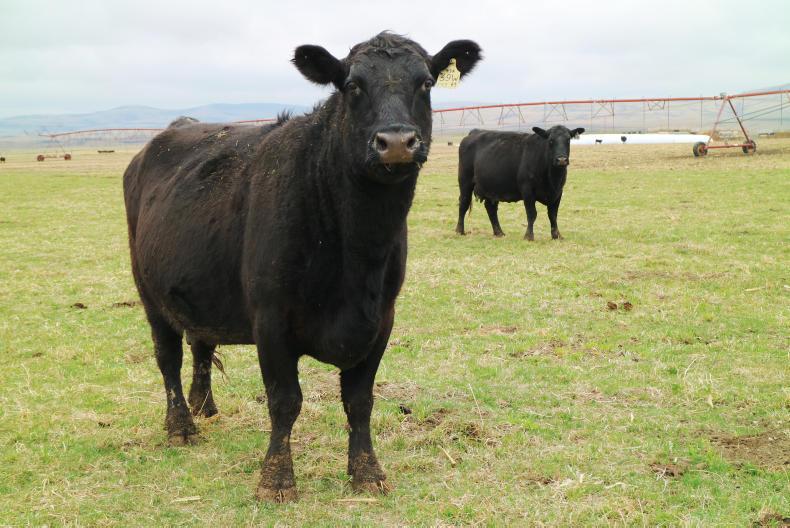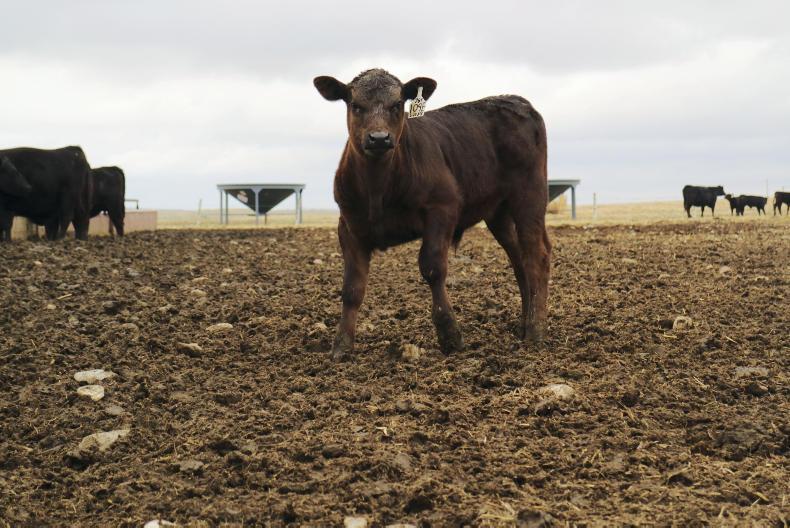12 million: on 1 Jan 2017, there were 12m head in Canada’s cattle inventory. The beef cow herd comprises 3.8 million animals and there are 960,000 dairy cows in the country.2.8 million: there were 2.8 million cattle slaughtered in Canada last year.1.2 million: Canada is forecast to produce 1.2m metric tonnes of carcase beef in 2017, up from 1.1m in 2016. This places it at number 11 in the global beef output ranking.142,000: Canada imported 142,000t of beef from the USA in 2016, making it America’s fifth largest beef export market (13%). Japan receives 23% of American beef exports (259,000t), with South Korea accounting for 19% and Mexico 16%.
395: the average carcase weight in Canada in 2016 was 395kg. Steers were 417kg on average, with heifers tipping the scales at 381kg.
120: the growing season (grass and crops) in Alberta is approximately 120 days.100: non-hormone-treated cattle take an extra 100 days to finish at the Cattleland feedlot in Strathmore, Alberta.68: the western province of Alberta is Canada’s cattle capital, with 68% of all feedlot cattle fed here.26: the average Canadian will eat 26kg of beef in 2017. South Americans are the planet’s biggest consumers, with Uruguayans, Argentinians and Brazilians putting away 59kg, 55kg and 38kg respectively. The average American will eat 36kg, while here in Europe we will eat just 16kg.20: a stocking rate of 20 acres/cow would be considered good on Canadian cow-calf (suckler) ranches.13: Canada has the 13th biggest cattle population in the world, with 0.8% of the planet’s total cattle. India is number one with 300 million and 19% of global share. Brazil is second (214 million, 14%) and the USA third (102 million, 6.5%).11: the use of hormones allows for the production of 11% more beef from 20% fewer cattle.
5: Canadian beef accounts for 5% of global beef exports. India is the largest beef exporter in the world (22%), followed by Brazil (16%), Australia (14%) and the US (10%).1.7: Canada produces 1.7% of the world’s carcase beef. The US produces the most (17%), followed by Brazil (14%), the EU (12%) and China (12%).1: One serving of cabbage contains the same amount of oestrogen hormone as more than 1,000 servings of beef produced using hormone implants. Read more
Video and pictures: Alberta breeder on bulls and paddocking
Watch: moving cows on horseback in the Rocky Mountains
12 million: on 1 Jan 2017, there were 12m head in Canada’s cattle inventory. The beef cow herd comprises 3.8 million animals and there are 960,000 dairy cows in the country.2.8 million: there were 2.8 million cattle slaughtered in Canada last year.1.2 million: Canada is forecast to produce 1.2m metric tonnes of carcase beef in 2017, up from 1.1m in 2016. This places it at number 11 in the global beef output ranking.142,000: Canada imported 142,000t of beef from the USA in 2016, making it America’s fifth largest beef export market (13%). Japan receives 23% of American beef exports (259,000t), with South Korea accounting for 19% and Mexico 16%.
395: the average carcase weight in Canada in 2016 was 395kg. Steers were 417kg on average, with heifers tipping the scales at 381kg.
120: the growing season (grass and crops) in Alberta is approximately 120 days.100: non-hormone-treated cattle take an extra 100 days to finish at the Cattleland feedlot in Strathmore, Alberta.68: the western province of Alberta is Canada’s cattle capital, with 68% of all feedlot cattle fed here.26: the average Canadian will eat 26kg of beef in 2017. South Americans are the planet’s biggest consumers, with Uruguayans, Argentinians and Brazilians putting away 59kg, 55kg and 38kg respectively. The average American will eat 36kg, while here in Europe we will eat just 16kg.20: a stocking rate of 20 acres/cow would be considered good on Canadian cow-calf (suckler) ranches.13: Canada has the 13th biggest cattle population in the world, with 0.8% of the planet’s total cattle. India is number one with 300 million and 19% of global share. Brazil is second (214 million, 14%) and the USA third (102 million, 6.5%).11: the use of hormones allows for the production of 11% more beef from 20% fewer cattle.
5: Canadian beef accounts for 5% of global beef exports. India is the largest beef exporter in the world (22%), followed by Brazil (16%), Australia (14%) and the US (10%).1.7: Canada produces 1.7% of the world’s carcase beef. The US produces the most (17%), followed by Brazil (14%), the EU (12%) and China (12%).1: One serving of cabbage contains the same amount of oestrogen hormone as more than 1,000 servings of beef produced using hormone implants. Read more
Video and pictures: Alberta breeder on bulls and paddocking
Watch: moving cows on horseback in the Rocky Mountains




SHARING OPTIONS: